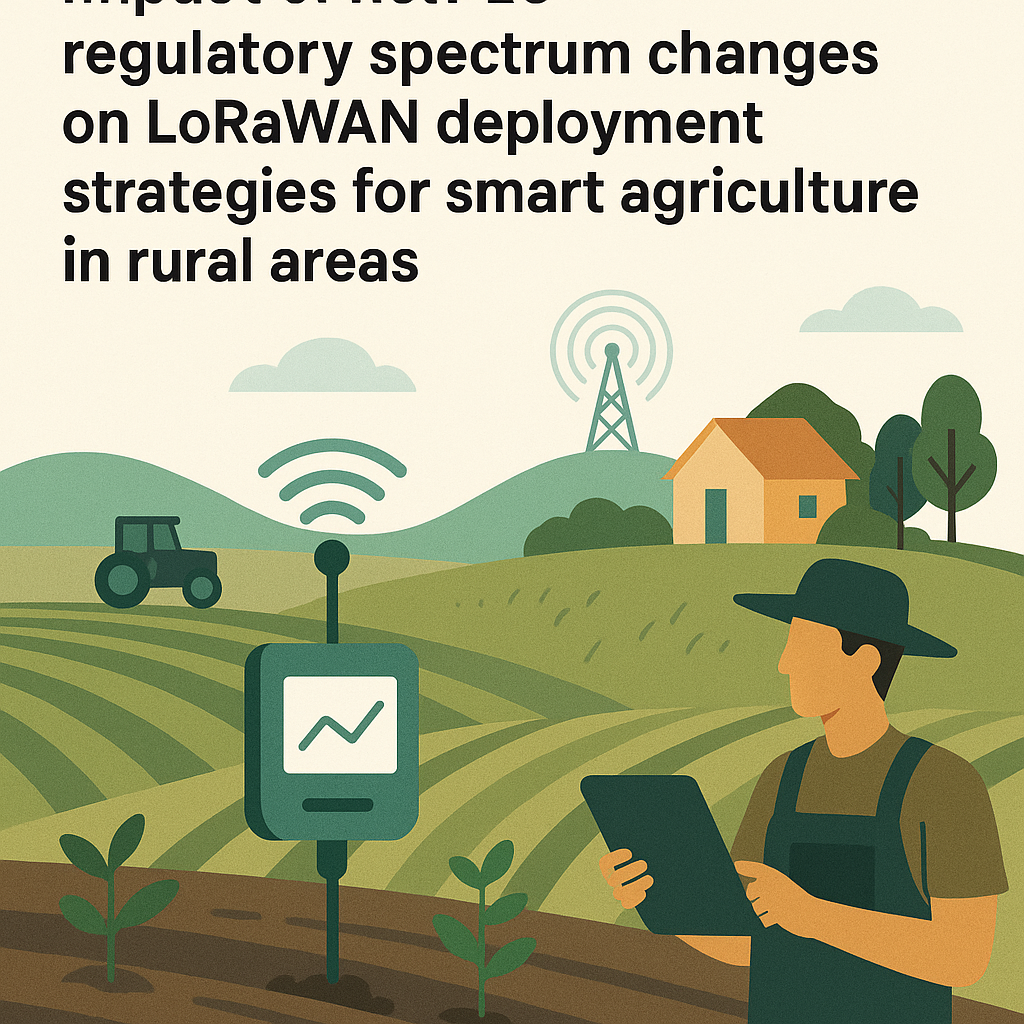Introduction
The recent changes in the European Union’s regulatory spectrum are poised to significantly impact the deployment strategies of LoRaWAN (Long Range Wide Area Network) technologies, particularly in the realm of smart agriculture in rural areas. As rural farming increasingly adopts IoT solutions for efficiency and sustainability, understanding these regulatory shifts becomes vital for stakeholders in the agricultural sector. This article explores the implications of these changes and how they can shape future strategies for implementing LoRaWAN in smart agriculture.
Understanding LoRaWAN and Its Importance in Agriculture
LoRaWAN is a low-power, wide-area network protocol designed for connecting low-bandwidth devices over long distances. Its application in agriculture allows farmers to:
- Monitor soil moisture levels.
- Track livestock health and location.
- Optimize water usage and irrigation schedules.
- Manage crop conditions and yield predictions.
These capabilities contribute to smarter farming practices, enhancing productivity while minimizing environmental impacts.
Recent EU Regulatory Spectrum Changes
The European Union has recently introduced regulations aimed at optimizing the use of the radio frequency spectrum. These changes include:
- Increased availability of frequency bands for IoT applications.
- New guidelines for the operation of low-power devices.
- Enhanced measures to minimize interference between different technologies.
These regulatory adjustments are designed to foster innovation in the IoT sector, particularly in rural areas where connectivity has historically been a challenge.
Impact on LoRaWAN Deployment Strategies
The new regulations will have a profound impact on how LoRaWAN is deployed in smart agriculture. Here are some key implications:
1. Enhanced Coverage and Connectivity
With increased frequency availability, LoRaWAN networks can expand their coverage, allowing more rural areas to achieve connectivity. This is particularly beneficial for:
- Remote farms that previously faced connectivity issues.
- Areas where traditional network infrastructure is lacking.
2. Cost Reduction
The regulatory changes may lead to reduced costs associated with deploying LoRaWAN infrastructure. As the spectrum becomes more accessible, farmers can expect:
- Lower licensing fees for operating devices.
- Reduced costs for equipment and maintenance.
3. Improved Device Interoperability
As the EU enforces guidelines to minimize interference, LoRaWAN devices can operate more effectively alongside other technologies. This results in:
- Greater compatibility between various IoT devices.
- Improved data reliability and performance.
4. Increased Innovation and Development
With a more favorable regulatory environment, there is a potential for increased investment in the development of innovative IoT solutions tailored for agriculture. This could lead to:
- New applications that enhance farming efficiency.
- Advanced analytical tools for data-driven decision-making.
Challenges and Considerations
While the regulatory changes present numerous opportunities, several challenges must be addressed for successful LoRaWAN deployment in rural smart agriculture:
1. Infrastructure Development
Building the necessary infrastructure to support LoRaWAN networks in rural areas requires significant investment and planning. Stakeholders must consider:
- Collaborating with local governments and organizations.
- Identifying suitable locations for gateway installations.
2. Education and Training
Farmers and agricultural workers need training to effectively utilize new technologies. This involves:
- Providing resources and workshops on IoT applications.
- Demonstrating the benefits of smart agriculture practices.
3. Data Privacy and Security
As more devices become interconnected, concerns regarding data privacy and security arise. Addressing these issues is essential to:
- Build trust among users.
- Ensure compliance with data protection regulations.
Conclusion
The EU’s regulatory spectrum changes represent a pivotal moment for the future of LoRaWAN deployment strategies in smart agriculture. By enhancing connectivity, reducing costs, and fostering innovation, these changes can transform how rural farmers utilize technology to enhance their productivity and sustainability. However, it is crucial for stakeholders to address the associated challenges to fully realize the potential of LoRaWAN in smart agriculture. By collaborating, educating, and prioritizing data security, the agricultural sector can effectively navigate this new landscape and reap the benefits of advanced IoT solutions.



